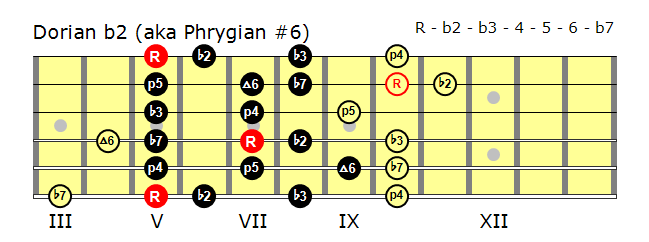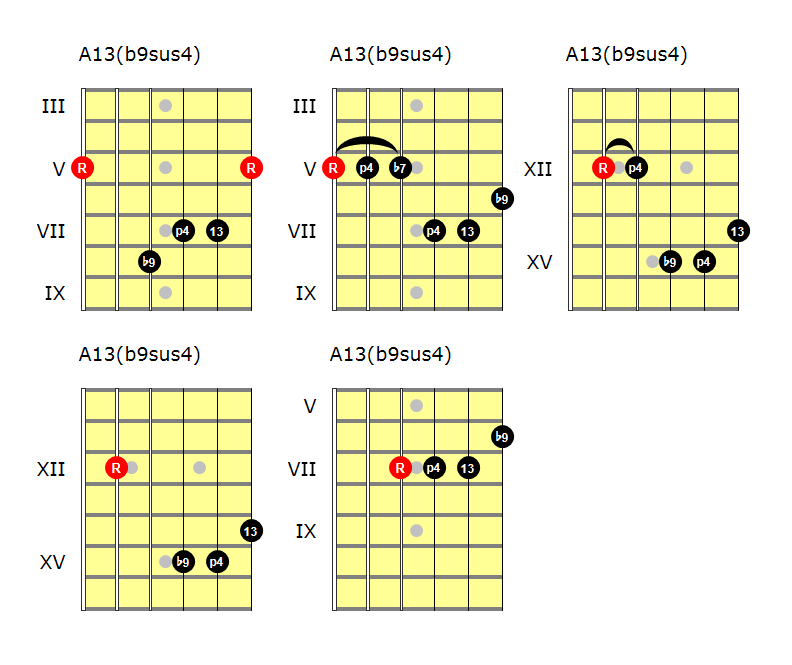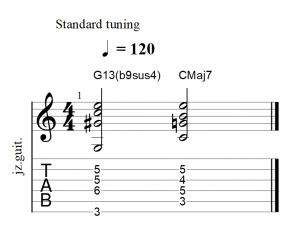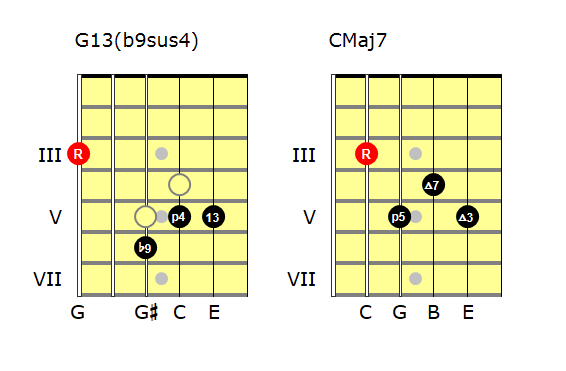Continuing my look at Melodic Minor modes this post covers mode 2, Dorian b2. This mode is sometimes called the Phrygian #6.
Scale formula
The formula for the Dorian b2 scale is:
R - b2 - b3 - 4 - 5 - 6 - b7
You can see this scale is similar to the major scale Dorian mode, the only difference being the b2.

Chords
- dom13(b9sus4)
Possible extensions/tensions: b9, 11, 13

Usage
- Substitute this chord – dom13(b9sus4) – for a V chord.
- Only with a functioning V chord (i.e. resolving to a I).
As noted above, this is the Dorian mode with a flat 2. If we try and build a chord with this scale in the traditional way – by stacking 3rds – we get a chord but it’s not really the sound of the scale. In fact we’d get something like:
R - b3 - 5 - b7 - b9
Instead, to harmonise this mode we make use of a suspended 4 chord. What we actually use is:
R - 4 - b7 - b9 - 13
In fact, if you take the 4 and replace it with a 3rd you get a regular Dominant chord! This suggests you can take this chord and use it wherever you can use a V chord.
If we look at how the Dom13(b9sus4) chord resolves to a I chord (a major 7th chord) we can see the 2 of the notes move in semitones. This creates a sense of resolution.

In this example in C major we are going from G13(b9sus4) – which is acting as a V chord – to the I chord, CMaj7. We can see how the b9 (G#) of G13(b9sus4) will move down a semitone to the p5 (G) of CMaj7. Similarly, the p4 (C) of G13(b9sus4) will move down a semitone to the 7 (B) of CMaj7).

